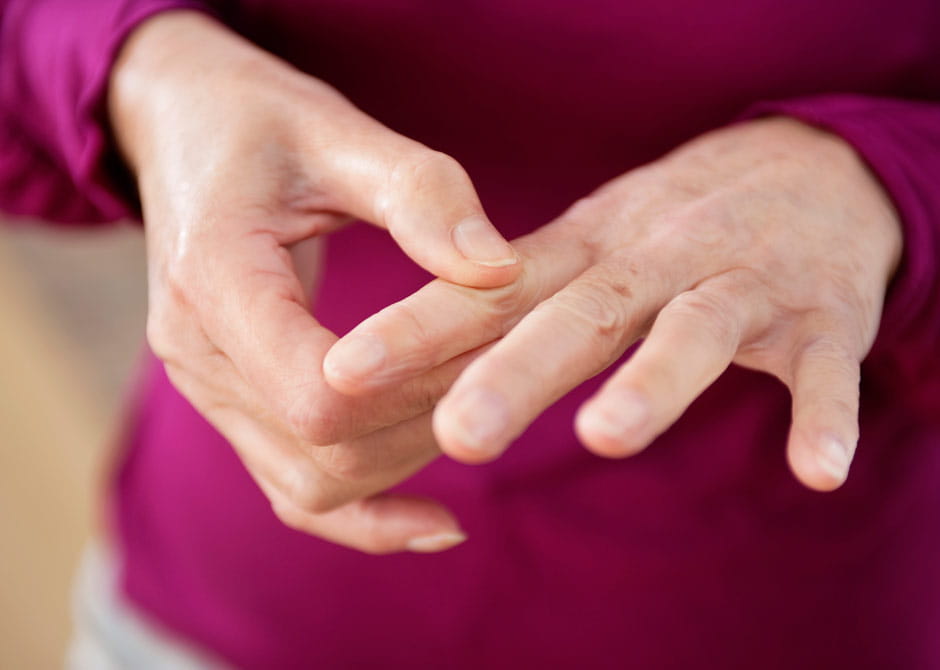 What is mallet finger?
What is mallet finger?
Mallet finger, also known as drop finger or baseball finger, is an injury to the tendon that straightens your fingertip. This condition primarily affects the last joint of your finger or thumb, causing the fingertip to droop and making it difficult to extend fully.
If you have mallet finger, you’ll be unable to straighten your finger, it droops at the tip, is painful and looks bruised or swollen. Mallet finger often occurs in sports that involve the hands, such as basketball or baseball.
The injury can also happen at home if you hit the tip of your finger on an immovable object like a door or wall. The hand specialists and orthopedic surgeons at The Ohio State University Wexner Medical Center in Columbus, Ohio, offer expert care if you have mallet finger or another hand condition, and will get you back to enjoying life quickly following injury.
What causes it?
Mallet finger injury happens when something hard hits your extended finger or fingertip. A common example is a ball striking your finger or thumb with force. This impact can tear the tendon that straightens the finger, or it can pull a small piece of bone away from where the tendon attaches.
Mallet finger symptoms
After you experience the pain of the initial injury, signs of a mallet finger injury are:
- Inability to straighten your fingertip (resulting in a drooping appearance)
- Pain and swelling of the last joint of your finger
- Redness around the affected area
- Tenderness when you touch or try to move the fingertip
- Detached fingernail
How is mallet finger diagnosed?
Your doctor will ask about how the finger injury occurred and will conduct a physical exam. They’ll look for signs such as your inability to straighten the fingertip.
Your doctor may order an X-ray to determine if there is any bone involvement, such as a fracture or a bone fragment that has been pulled away by the tendon. The results of the X-ray will be crucial in identifying a treatment plan.
Do you need treatment for mallet finger?
In the immediate aftermath of the injury, you should put an ice pack on the injured finger and limit movement as much as possible.
Your doctor will determine the best long-term treatment plan for complete healing. Most treatment options are nonsurgical and include:
- Splinting: Wearing a splint keeps your finger straight and helps the tendon heal. You may need to wear the split for six to eight weeks.
- Ice and rest: Applying ice to the injured finger can help reduce swelling and pain. Limiting use of the finger while you recover will help it heal faster.
- Medication: Over-the-counter pain relievers, such as ibuprofen or acetaminophen, can help manage pain and reduce inflammation.
Will surgery be needed to treat mallet finger?
If your mallet finger injury is complex, it’s possible you may need hand surgery to help your finger heal. Surgical treatment options for mallet finger include:
- Pinning: Small pins are inserted into your finger to hold bone fragments together and keep the joint straight while the area heals.
- Tendon repair: Your hand surgeon may reattach the torn tendon to the bone or repair it using sutures. This procedure aims to restore the tendon's function and allow the finger to straighten properly.
How serious is mallet finger?
Mallet finger can be serious if not treated properly. Without treatment, it’s possible you could experience permanent drooping of your fingertip, reduced finger function or chronic pain.
The severity of the injury and how soon you seek treatment can affect the outcome.
